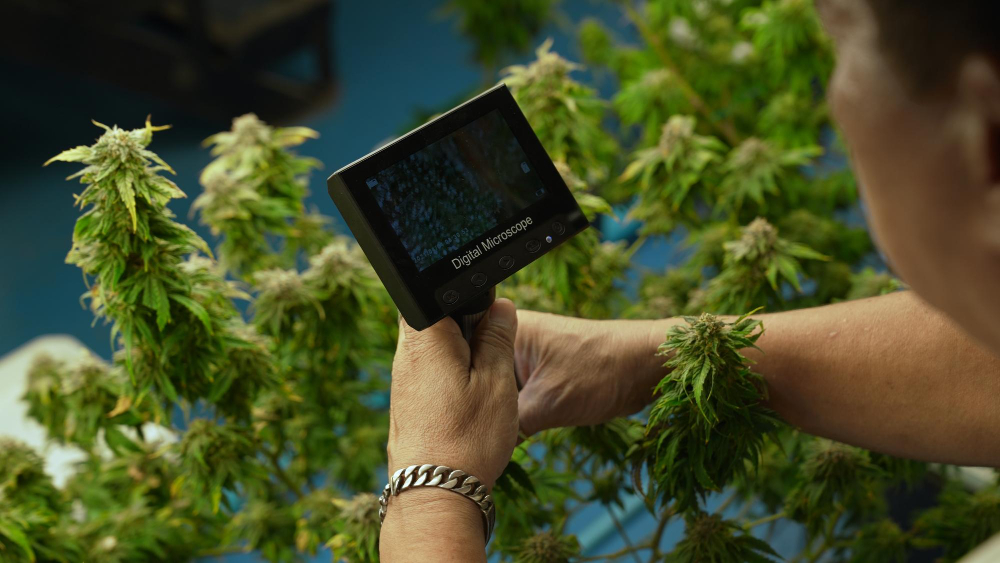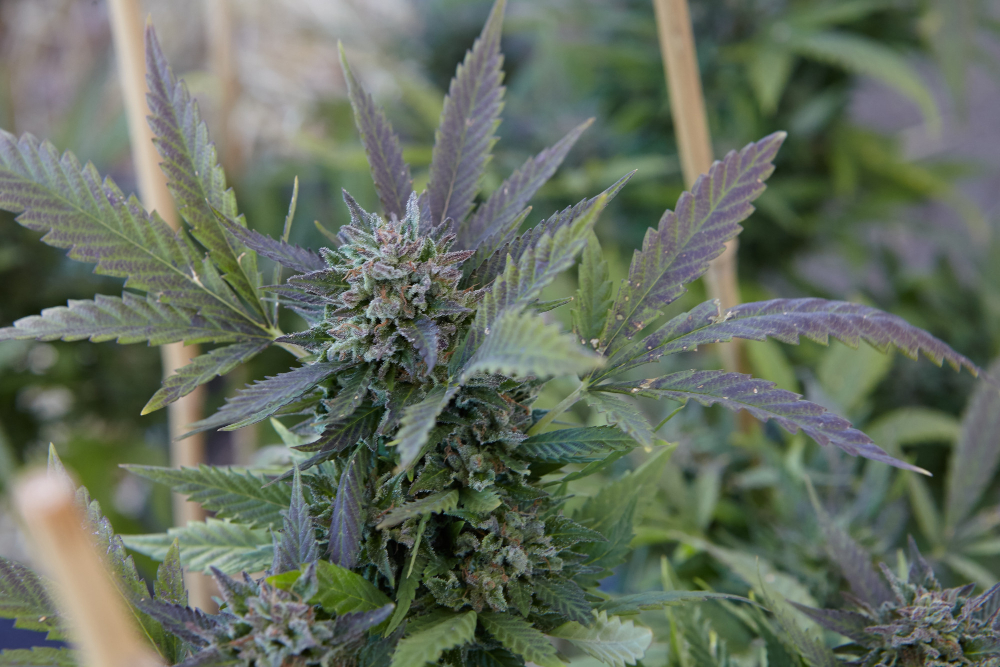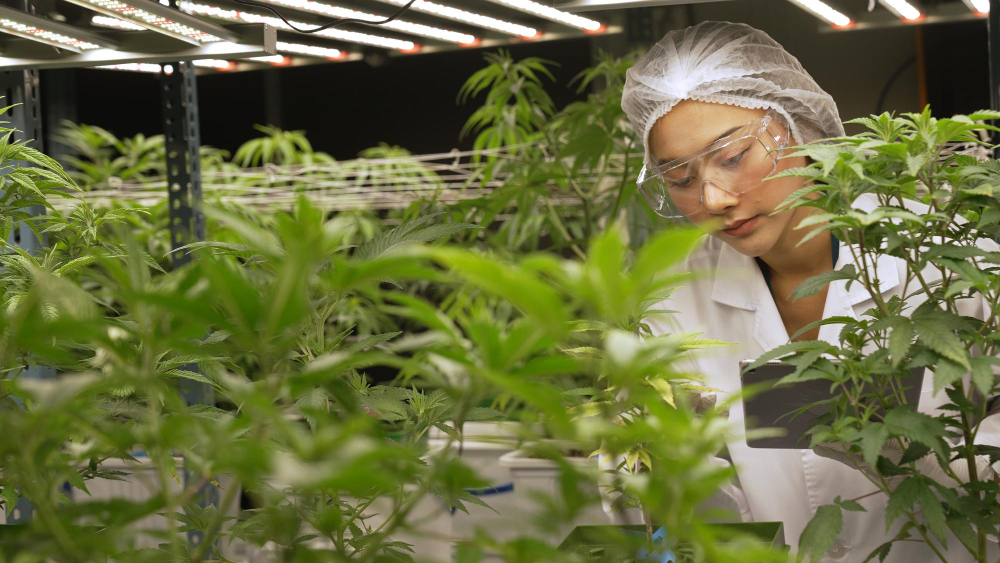The cultivation of cannabis requires meticulous attention to various environmental factors, with pH levels being one of the most critical components. The pH of the soil or nutrient solution directly affects the plant’s ability to absorb essential nutrients, which in turn impacts growth, yield, and overall plant health. Understanding and maintaining the ideal pH for cannabis cultivation, helps promoting robust and healthy plants throughout their lifecycle. At Agropharm, we bring years of expertise in agricultural consulting, specializing in both traditional crops and emerging sectors like cannabis cultivation. Our comprehensive knowledge allows us to guide clients through the intricacies of agricultural projects, ensuring the success of each venture through expert advice and tailored strategies.
In this post, we will delve into the significance of pH levels in cannabis cultivation. We’ll explore the ideal pH range for different growth stages, the effects of pH imbalance on plant development, and practical strategies for achieving optimal pH conditions in your growing environment. Whether you’re new to cannabis cultivation or looking to refine your practices, understanding pH is key to elevating your yields and quality.
What is pH and why is it important for cannabis?
pH, which stands for “potential hydrogen,” is a measure of the acidity or alkalinity of a substance. In relation to soil and water chemistry, pH determines how easily nutrients can be absorbed by plants. The pH scale ranges from 0 to 14, with values below 7 indicating acidity, values above 7 indicating alkalinity, and a pH of 7 representing neutral conditions. For cannabis cultivation, the ideal pH range in soil is typically between 6.0 and 7.0, while hydroponic systems thrive in a slightly more acidic range, between 5.5 and 6.5.
pH influences nutrient uptake by affecting the solubility of minerals and nutrients in the soil or nutrient solution. If the pH is too high or too low, certain essential nutrients become unavailable to the plant, leading to deficiencies or toxicity. This can result in stunted growth, yellowing leaves, and reduced yields.
Both low and high pH can have detrimental effects on cannabis cultivation. Low pH (acidic conditions) can cause nutrients like calcium and magnesium to become less available, while high pH (alkaline conditions) can lock out essential elements like iron and phosphorus. Maintaining the right pH ensures that cannabis plants can absorb the nutrients they need for optimal health and growth.
What is the ideal pH level for cannabis?
When it comes to growing cannabis, maintaining the best pH for cannabis is essential for healthy plant development. The ideal pH level varies depending on whether you’re cultivating cannabis in soil or using hydroponic systems, but in both cases, proper pH ensures that your plants can absorb the nutrients they need for optimal growth.
Cannabis soil pH
For soil-based cultivation, the ideal pH for cannabis falls between 6.0 and 7.0. This range is slightly acidic to neutral, which is perfect for the majority of cannabis strains. A pH within this range ensures that vital nutrients such as nitrogen, phosphorus, and potassium are readily available to the plants. When the pH is within this optimal range, the plant roots can efficiently uptake nutrients, leading to robust growth, healthy foliage, and strong bud development. If the pH is outside this range, nutrients can become either too concentrated or too scarce, leading to deficiencies or toxicity that stunt plant growth and reduce yields.
Cannabis water pH
For hydroponic cannabis systems, the ideal pH for cannabis water is typically between 5.5 and 6.5. Since hydroponic systems do not rely on soil to buffer pH fluctuations, water pH must be closely monitored and adjusted to maintain nutrient availability. Water with a pH in this range ensures that the cannabis roots can efficiently absorb nutrients, leading to optimal growth rates and healthier plants. If the water’s pH drops below 5.5, it can lead to nutrient lockout, while a pH above 6.5 can cause certain nutrients, such as iron and magnesium, to become unavailable, leading to deficiencies and stressed plants.
In both soil and hydroponic cultivation, maintaining the best pH for cannabis is crucial for preventing nutrient deficiencies and ensuring your plants thrive.
What is the best pH for cannabis growth?
The best pH for cannabis growth is crucial for ensuring healthy root development, optimal nutrient absorption, and overall plant vitality. When the pH is in the ideal range, plants are able to access a wide array of essential nutrients necessary for robust growth. In the vegetative phase, cannabis plants require abundant nitrogen for strong stems and leaves, while in the flowering phase, phosphorus and potassium become more critical for bud formation and overall yield.
Maintaining the right pH level directly influences the plant’s ability to take up these nutrients. A well-balanced pH ensures that minerals like calcium, magnesium, and sulfur are readily available, which promotes healthy root growth. If the pH is off, certain nutrients can become locked out, causing deficiencies that stunt root growth and hinder the plant’s ability to thrive.
During the vegetative phase, cannabis plants are more forgiving of slight pH fluctuations, but for optimal growth, the soil should maintain a pH of 6.0 to 7.0. In the flowering phase, a more precise pH range of 5.8 to 6.5 is ideal, as it allows the plant to absorb the higher levels of phosphorus and potassium necessary for flower development.
At Agropharm we specialize in providing expert consulting and technical solutions to help optimize pH levels and overall growing conditions. Whether you are adjusting pH in a soil-based or hydroponic system, our expertise ensures your cannabis plants thrive throughout all growth stages, leading to higher yields and premium-quality buds.

What is the best pH for cannabis indoor growing?
Indoor cannabis cultivation requires precise pH control to ensure optimal growth, as indoor environments are more controlled than outdoor settings. Unlike the soil outside, which can buffer pH fluctuations, indoor systems, whether soil or hydroponic, rely on the grower to maintain a stable pH range. Any variation outside the ideal pH range can affect nutrient uptake, plant health, and ultimately the yield.
Environmental factors such as temperature and humidity can have a significant impact on pH levels indoors. Higher temperatures can cause pH fluctuations, especially in hydroponic systems, as warmer water tends to have a lower pH. Humidity and temperature also plays a role, as it affects transpiration rates, which can influence the plant’s nutrient absorption. If humidity and temperature, which balance VPD (vapour pressure deficit), are too high or too low, it can lead to imbalances in nutrient uptake, impacting the plant’s overall health and growth.
To maintain the ideal pH for cannabis, it’s essential to monitor regularly. Here are some tips for adjusting and monitoring pH in indoor setups:
- Use a pH meter: Invest in a reliable pH meter to check the water or soil pH regularly.
- Adjust the pH: If pH levels are off, use pH up or pH down solutions to adjust accordingly.
- Calibrate tools: Regularly calibrate your pH meter to ensure accurate readings.
- Monitor environmental factors: Keep track of room temperature and humidity, and adjust them to maintain stable conditions.
By carefully monitoring and adjusting pH, you can create the ideal environment for cannabis growth indoors.
What is too high pH for cannabis?
A pH level above 7.0 is considered too high for cannabis cultivation. In this alkaline range, the soil or nutrient solution becomes unsuitable for the plant’s root system to effectively absorb essential nutrients. The ideal pH for cannabis typically falls between 6.0 and 7.0 in soil and 5.5 to 6.5 in hydroponics, so when pH levels exceed 7.0, nutrient absorption becomes compromised.
High pH levels lead to nutrient lockout, a condition where the plant is unable to access critical nutrients, even if they are present in the soil or nutrient solution. Magnesium, iron, and phosphorus are particularly vulnerable to lockout in high pH conditions. This can cause deficiencies in these nutrients, which are vital for processes like chlorophyll production, energy transfer, and overall plant metabolism.
Symptoms of high pH in cannabis plants are typically visible in the leaves. You may notice yellowing leaves, particularly older leaves, due to a lack of chlorophyll. Stunted growth is also common, as the plant struggles to take up nutrients necessary for healthy development. Other signs of high pH include brown spots or necrosis on the leaves and a general decline in plant vitality.
To avoid these issues, it’s essential to regularly check and adjust pH levels to maintain a balanced environment. If you notice these symptoms, consider lowering the pH of your soil or nutrient solution to restore proper nutrient uptake and support your cannabis plants’ growth.
What are the symptoms of high pH of cannabis?
High pH levels in cannabis cultivation can lead to a range of symptoms that indicate nutrient deficiencies and poor plant health. Here are the key signs to look out for:
- Yellowing Leaves (Chlorosis): One of the first indicators of a high pH problem is yellowing leaves, particularly on older growth. This is often caused by an inability to absorb vital nutrients like magnesium and iron, which are locked out in alkaline conditions.
- Stunted Growth: When pH is too high, plants struggle to take up essential nutrients, leading to slowed or stunted growth. The plant may appear weak and less vigorous than usual.
- Brown Spots or Necrosis: High pH can cause nutrient deficiencies that result in brown spots, especially on the edges or tips of the leaves. If left unaddressed, these areas may die, causing necrosis.
- Interveinal Chlorosis: This is a specific type of yellowing that occurs between leaf veins. It’s often a sign of magnesium or iron deficiency, which can be exacerbated by high pH levels.
- Reduced Bud Production: In the flowering phase, high pH can reduce the availability of phosphorus and potassium, leading to poor flower development and low yield.
Troubleshooting high pH issues
If you notice these symptoms, it’s essential to address the high pH promptly. Here are some effective methods:
- pH Adjustment: Use pH down solutions (such as phosphoric acid) to lower the pH of your soil or nutrient solution. Regularly monitor pH to ensure it stays within the optimal range.
- Soil Amendments: For soil-based systems, incorporate soil amendments like sulfur or peat moss to gradually lower the pH and restore balance.
- Flush the System: In hydroponics, flushing with pH-balanced water can help clear out excess alkalinity and allow plants to start absorbing nutrients again.
By correcting pH imbalances through these methods, you can mitigate the symptoms of high pH and promote a healthier, more productive cannabis crop.
What is the best pH level for plant runoff?
Runoff pH refers to the pH of water that drains from the bottom of a pot or container after watering. It should match the ideal pH range for cannabis to ensure proper nutrient absorption. For soil systems, the ideal runoff pH is between 6.0 and 7.0, while for hydroponic systems, it should be between 5.5 and 6.5. To measure runoff pH, collect the water that drains from the pot and test it with a pH meter. If it’s out of range, adjust the pH of your water or nutrient solution accordingly.

What is the best pH to flush cannabis?
Flushing is the process of irrigating cannabis plants with plain water to remove excess nutrients and prevent nutrient buildup in the soil or hydroponic system. During flushing, maintaining the proper pH ensures that the plant can still absorb minimal nutrients without stressing the plant.
The ideal pH for flushing cannabis is 6.0 to 6.5 for soil and 5.5 to 6.0 for hydroponic systems. This range promotes a healthy environment for the plant while helping to improve the flavor, aroma, and overall quality of the final product by preventing nutrient lockout and excess buildup.
In conclusion, maintaining the ideal pH level for your cannabis plants is crucial for optimal growth and yield. At Agropharm, we specialize in providing expert consulting and solutions for cannabis cultivation. Contact us today to ensure your project reaches its full potential with professional guidance.
